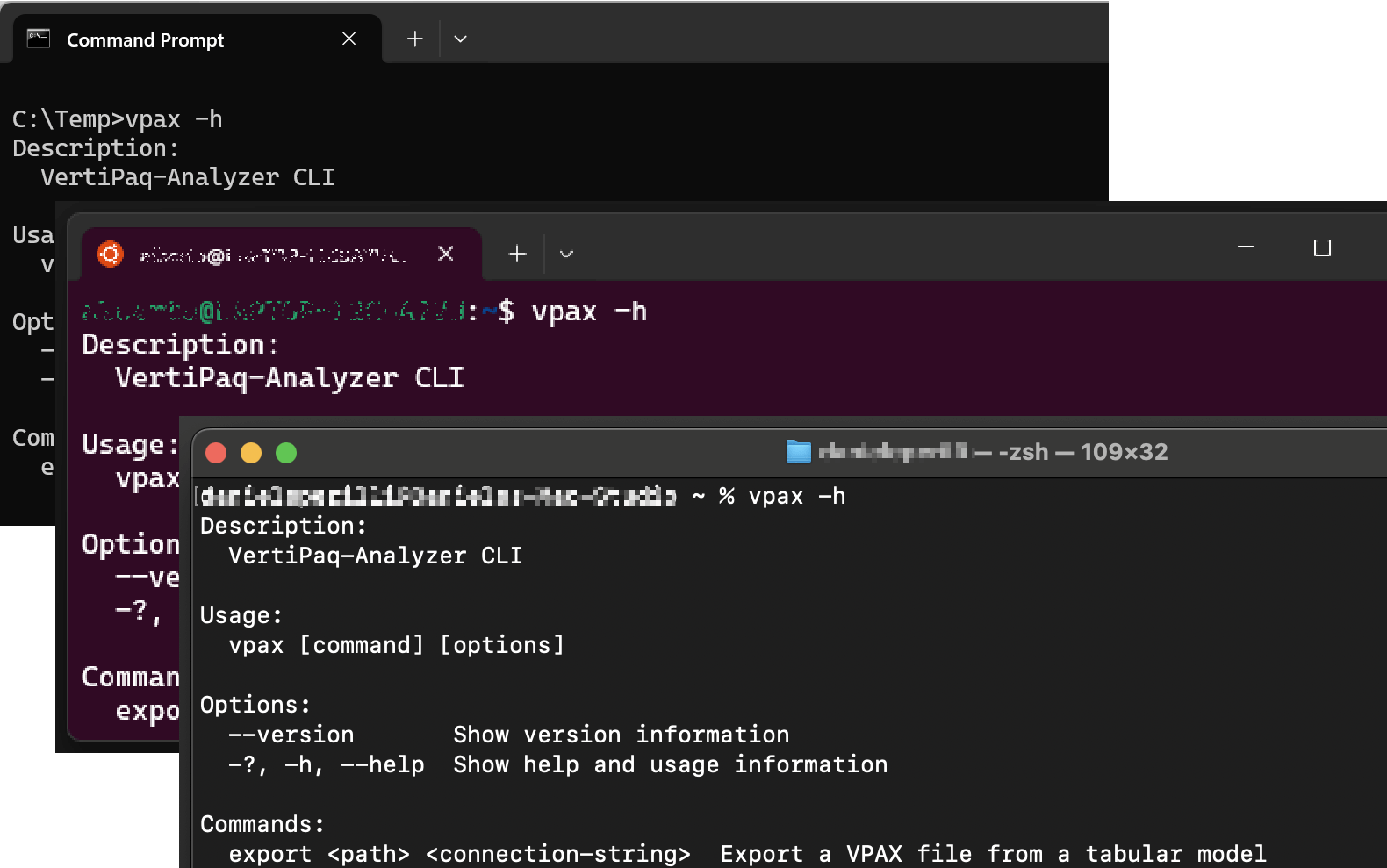Did you ever want to extract a VPAX file using a command line tool?
If you are among the early adopters of DataOps principles or simply want to automate processes, you will be glad to know that we now have a command-line tool to extract a VPAX file from a Power BI semantic model or an Analysis Services database.
If you never thought about that, now you can:
- Automate/schedule the extraction of a VPAX file from a database in production.
- Include the VPAX extraction in a DevOps pipeline.
- Analyze the model with DAX Optimizer using that service upcoming command line tool.
VPAX is the format used to store the results of VertiPaq Analyzer, an open-source library that extracts statistical information from a Tabular model, like the semantic model in Power BI.
Several tools have adopted the VertiPaq Analyzer library, the more popular of which are Bravo for Power BI, DAX Studio, and Tabular Editor. However, over the years, many people wanted to regularly capture the statistics of a database in a VPAX file to enable future comparisons. All the existing tools have an interactive user interface and cannot automate the extraction of the VPAX file.
The VPAX Command Line tool can create a VPAX file in an automated script. This way, you can extract a VPAX file for a database every week or every day. The automation can be part of an Azure DevOps pipeline. You can find a sample YAML script in the documentation.
However, this tool enables you to extract a VPAX file from any of these operating systems:

- Windows
- Mac OS
- Linux
Yes, make no mistake, this is not a drill!
The VPAX Command Line Tool also runs natively on Mac OS. It just requires the .NET 6 Runtime, which is free and easy to install.
Currently, Linux and Mac OS work well only with service principal authentication; you cannot log in interactively to Power BI with your username as you can in Windows yet. However, this is a big step forward in consuming Power BI content from other operating systems!